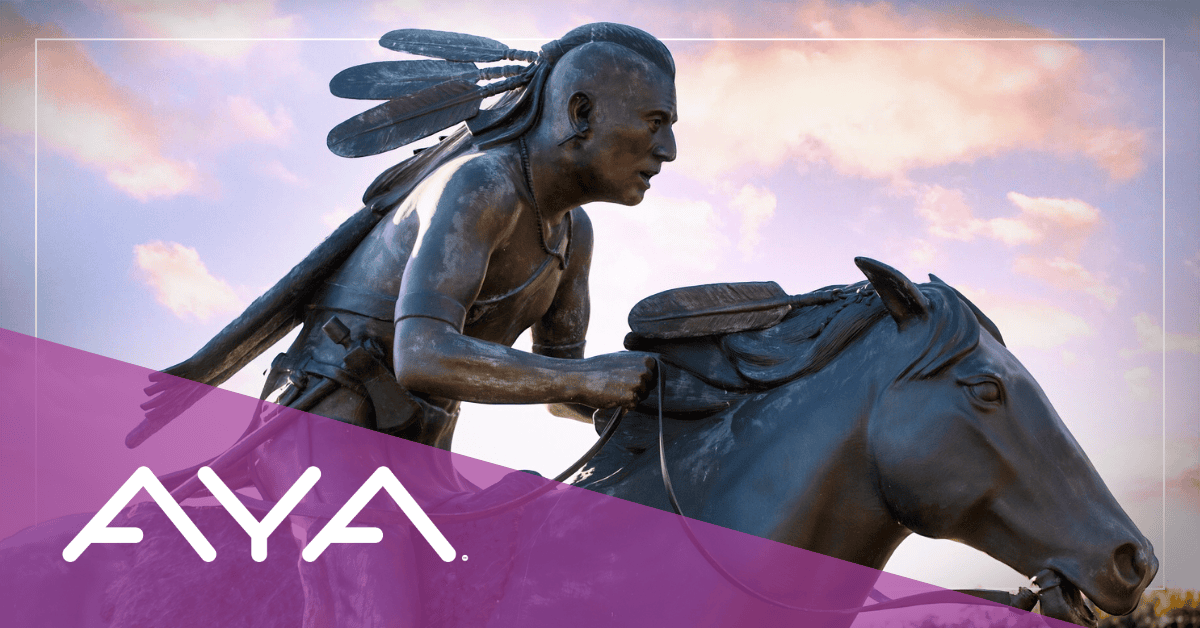Discover Hidden Gems: Exploring AYA's Point of Interest
Imagine walking through your neighborhood and suddenly discovering the hidden stories behind places you pass every day. This is exactly what Points...

The introduction of horses to the Americas began with Spanish explorer Hernando de Soto in 1540. As he and his party traveled north, they spent several months in Chickasaw lands. The Chickasaw people quickly integrated these horses into their daily lives, using them for hunting, farming, transportation and other tasks. Through intentional crossbreeding, the Chickasaw developed highly versatile horses that met multiple needs. Over time, the Chickasaw became deeply invested in horse breeding, earning a reputation for their exceptional equestrian skills. The lasting impact of Chickasaw horses on the Chickasaw Nation's history and culture is a testament to our deep connection with these remarkable animals.
Horses became integral to Chickasaw life, especially during festive occasions featuring races. The man with the fastest horse was revered as a hero. Chickasaw horses were particularly famed for their prowess in quarter-mile races, immensely popular during that era. Notably, a 1792 advertisement in the Knoxville Gazette highlighted a sorrel horse descended from a Chickasaw horse, named after the esteemed leader Piominko. This impressive horse, standing "upwards of 15 hands high," was raised in the Chickasaw Nation.
Chickasaws are recognized as the forerunners of the modern Quarter Horse. These horses were distinguished by their smaller size compared to thoroughbreds, their agility and their endurance. Renowned for their ability to cover distances with minimal food, they were considered the best utility horses of their era. The Chickasaw's role in shaping these remarkable animals is a source of great pride.
The legacy of the Chickasaw horse continues to be a source of pride and fascination. As we delve deeper into our history, we appreciate these remarkable animals' significant role in shaping the Chickasaw Nation. The tradition of raising prominent horses, which began in our Homeland, carried over to the time of Removal. In the Chickasaw District of Indian Territory, post-Removal, we were known to possess rich and plentiful pastureland for raising all kinds of livestock, including horses.
This thread in our history inspired a portion of the tale for William, an AYA walking partner, and his search for Shobbokoli' (gray), his beloved horse.
The audio clip above showcases Chikashshanompa' (Chickasaw words) William uses to describe his beloved friend, Shobbokoli'.

Set in 1877, this tale follows 12-year-old William on a daring quest to rescue Shobbokoli', his cherished horse. In the Chickasaw language, shobbokoli' means gray, but for William, there is no gray area concerning his horse's disappearance. He knows Shobbokoli' was stolen, and he will not rest until his beloved steed is found. This story chronicles a young man's transformation as he navigates a perilous landscape filled with formidable adversaries and unexpected allies. Witness William's journey from a tentative youth to a determined hero. Experience the bond between a boy and his horse, unbreakable, even in the face of danger and unlock episodes and chapters to get closer to the conclusion. Will William find his horse? Will the bandits who stole him be brought to justice? Can William, a Chickasaw boy from a small farm in Stonewall, apprehend the thieves on his own?
To find out, start your adventure with William on AYA Walking. Download the AYA app, and select "William" as your walking partner to join him in his search for his beloved horse.
Each story we tell in AYA is driven by our past. Some are robust and well-known, such as our Removal, but some are mere threads, such as our tradition and love of horsemanship. William’s story is a lighthearted coming-of-age tale and a reflection of Chickasaw history.
If you are not an AYA user, download the app and start walking with us today. If you are already an AYA user, check out all the features in the app. Learn about all AYA offers and answer questions about how the app works by visiting AYAWalk.com.
Subscribe to our newsletter and stay updated with the latest additions, new features and exciting challenges within the AYA community. Be part of a growing network of individuals dedicated to their fitness journey and exploring Chickasaw culture.
Anowa chipisala'cho (until we meet again),
- The AYA Walk Team
References:
[1] Arrell M. Gibson, The Chickasaws (Norman, OK: University of Oklahoma Press, 1971), 42, 227; James R. Atkinson, Splendid Land, Splendid People: The Chickasaw Indians to Removal (Tuscaloosa, AL: University of Alabama Press, 2004), 255-256, fn12; Knoxville Gazette, April 7, 1792, p. 4; Solomon’s AYA episode, “Chickasaw Horse.”
The AYA Walk App is a one-of-a-kind step counter that offers an exciting way to discover captivating narratives as you go about your daily routine.
The word "AYA" originates from the Chickasaw language and signifies "to go; to journey." As you take steps towards improving your fitness, AYA Walk accompanies you on this adventure, guiding you through time and unlocking stories from the past.
Along the way, you will stumble upon hidden treasures rooted in Chickasaw heritage, discover historical paths that unveil the secrets of the past, and have the chance to listen to stories about significant cultural landmarks.
AYA Walk celebrates more than just physical well-being; it also fosters a renewed connection to a healthier lifestyle. By engaging with this innovative step tracker, you'll improve your fitness and gain a deeper appreciation for the stories surrounding us.
Download AYA Walk today!

Imagine walking through your neighborhood and suddenly discovering the hidden stories behind places you pass every day. This is exactly what Points...

Ever wondered how the Chickasaw Annual Meeting and Festival became such an important tradition? It is a story of resilience, unity and pride. In...

Governor Johnston served the Chickasaw Nation for more than 39 years during an incredibly transformative period. His tenure, spanning the late 1890s...